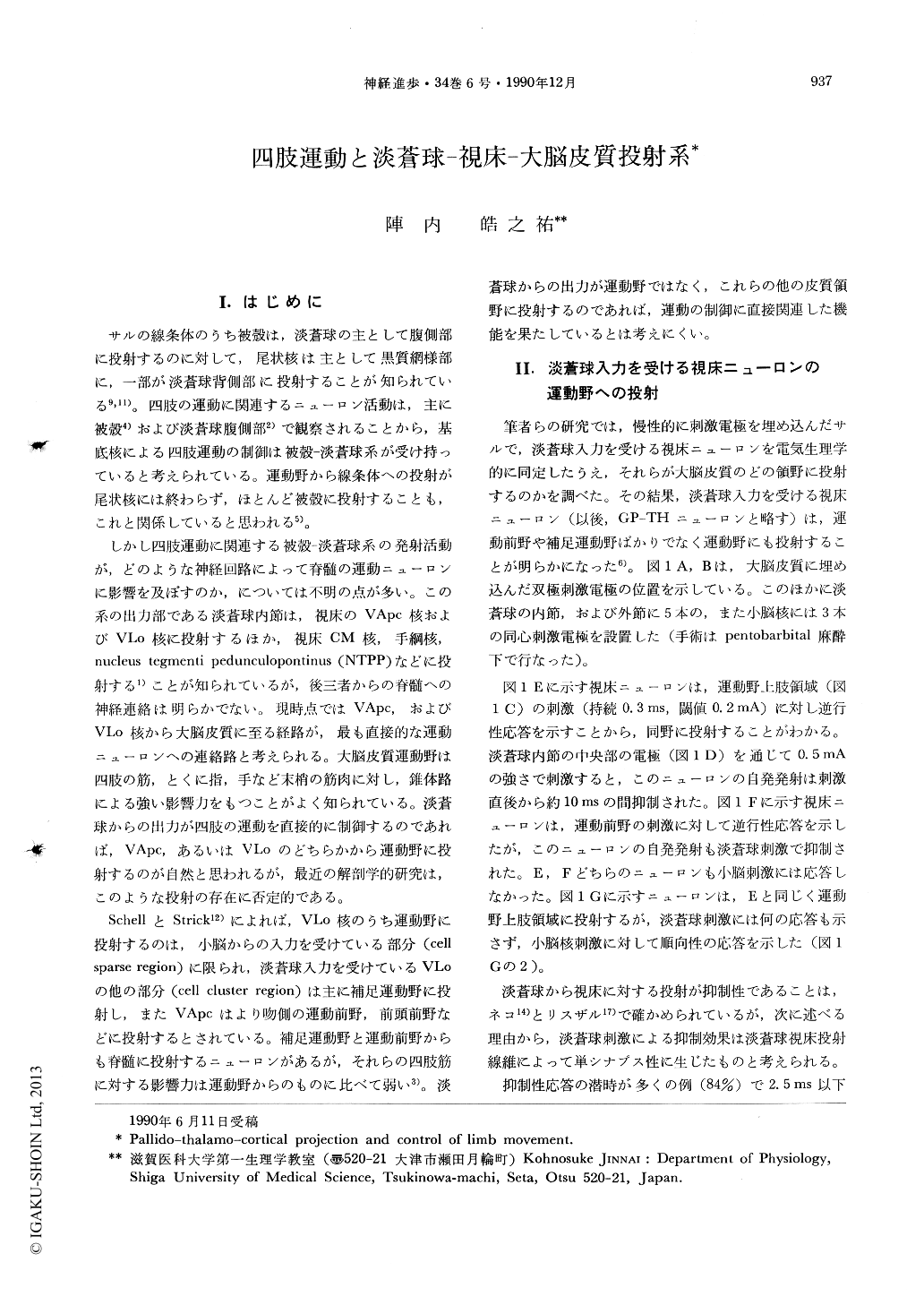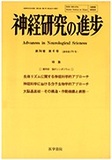Japanese
English
- 有料閲覧
- Abstract 文献概要
- 1ページ目 Look Inside
I.はじめに
サルの線条体のうち被殻は,淡蒼球の主として腹側部に投射するのに対して,尾状核は主として黒質綱様部に,一部が淡蒼球背側部に投射することが知られている9,11)。四肢の運動に関連するニューロン活動は,主に被殻4)および淡蒼球腹側部9)で観察されることから,基底核による四肢運動の制御は被殻―淡蒼球系が受け持っていると考えられている。運動野から線条体への投射が尾状核には終わらず,ほとんど被殻に投射することも,これと関係していると思われる5)。
しかし四肢運動に関連する被殻―淡蒼球系の発射活動が,どのような神経回路によって脊髄の運動ニューロンに影響を及ぼすのか,については不明の点が多い。この系の出力部である淡蒼球内節は,視床のVApc核およびVLo核に投射するほか,視床CM核,手綱核,nucleus tegmenti pedunculopontinus(NTPP)などに投射する1)ことが知られているが,後三者からの脊髄への神経連絡は明らかでない。現時点ではVApc,およびVLo核から大脳皮質に至る経路が,最も直接的な運動ニューロンへの連絡路と考えられる。大脳皮質運動野は四肢の筋,とくに指,手など末梢の筋肉に対し,錐体路による強い影響力をもつことがよく知られている。
Unitary activity of thalamic and pallidal neurons was studied in the monkeys which were trained to lift a. lever with their wrist in three different conditions, i.e., reaction time movement task, delayed GO/NOGO discrimination task, and self-paced movement. Stimulating electrodes were chronically implanted in various areas of the cerebral cortex, globus pallidus (GP) and cerebellar nuclei of the monkeys. Thalamocortical neurons with pallidal input (GP-TH neurons) were revealed to project, not only to the supplementary motor area (SMA) and premotor area (PM), but also to the motor area (area 4).

Copyright © 1990, Igaku-Shoin Ltd. All rights reserved.


